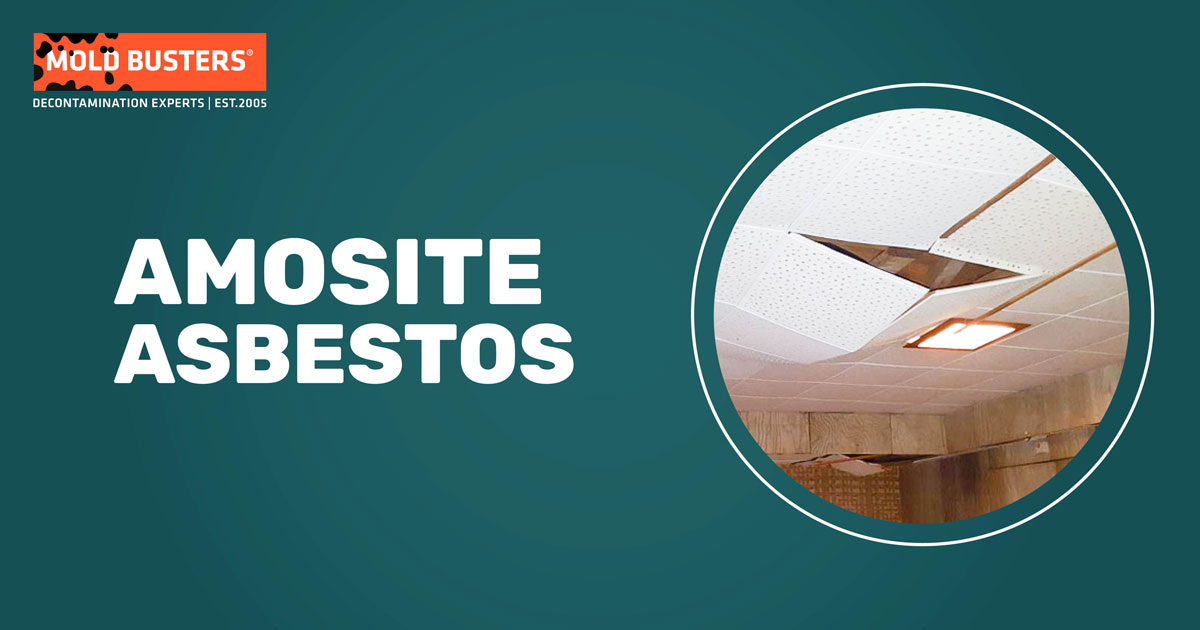Amosite Asbestos
Having performed many extensive asbestos tests over the years, our team has encountered all sorts of variants of the cancer-causing material.
Amosite asbestos is a very common type, and it’s just as harmful to building occupants in the long term. Let’s explore why in more detail.
What is amosite asbestos?
Asbestos is the name for a group fibrous minerals, including chrysotile, amosite, crocidolite, anthrophyllite, tremolite and actinolite. Several types of asbestos were used in construction materials, due to their high tensile strength, heat insulation and resistance to chemicals. For general information on asbestos, see our page About Asbestos.
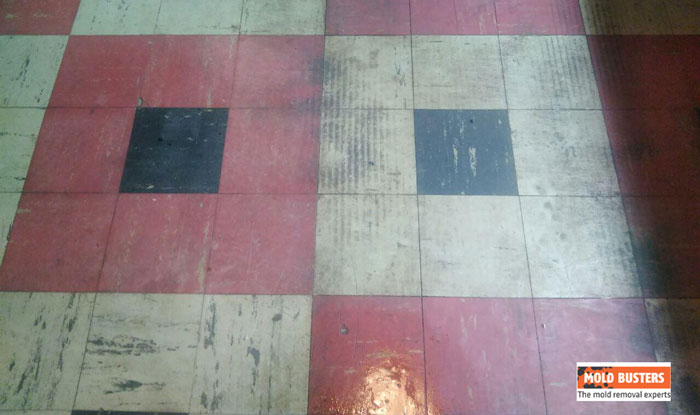
Amosite asbestos, also known as “brown asbestos” and grunerite, is a type of amphibole asbestos. The amphibole class of asbestos have straight, needle-like fibres that present an especially high risk of damaging the lungs when inhaled. Amosite’s distinctive brown or earthy grey colour comes from its high iron content.
Throughout the 20th century, amosite was the second most commonly used asbestos type, after chrysotile asbestos. It was often used where its heat resistance and high tensile strength were valued. Unfortunately, its needle-like and easily inhaled fibres also made it a particularly dangerous form of asbestos. Through growing awareness of the dangers of amosite asbestos, its use has dropped, but materials made with amosite can still be found in many buildings today.
Is amosite asbestos still used and where?
Over 50 countries including Canada have banned the use of asbestos, including amosite asbestos. However, just because its use has been banned now doesn’t mean it’s all gone. Amosite can still be found in buildings all over the world, including Canada—left over from an era when it was a common component in various construction materials.
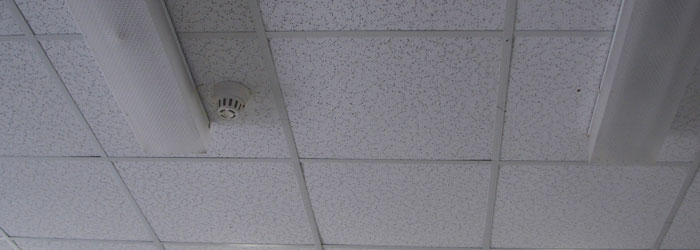
When did asbestos cease to be used in Canada?
Asbestos mining in Canada ended in 2011. However, it wasn’t until December 30, 2018 that all use of asbestos was banned. In the intervening years, inventories of products that contained asbestos that had not yet been sold, continued to sold and installed. Thus, even in newer buildings, there is a possibility of finding asbestos.
What materials contain amosite asbestos?
As we mentioned, amosite was the second most common type of asbestos used after chrysotile. It found its way into a variety of construction materials, such as gaskets cement sheets, insulation, vinyl tiles, roofing materials and other materials where thermal or chemical insulation were called for.
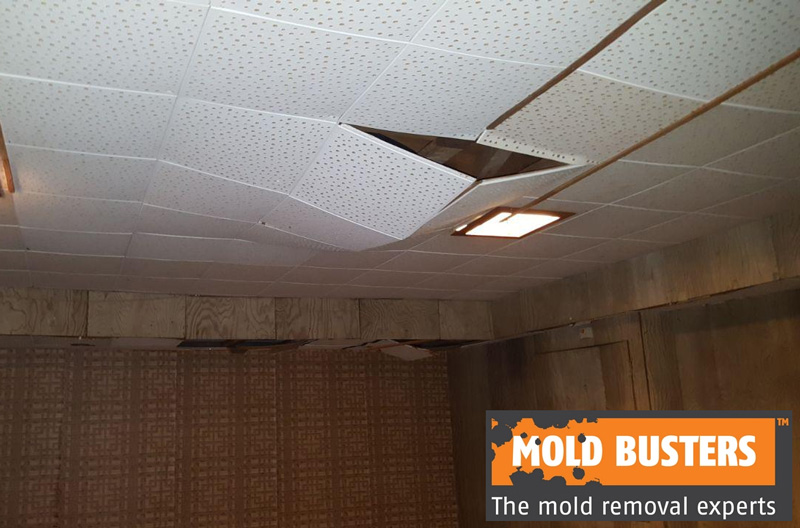
What are safe levels of amosite asbestos?
Experts around the globe, including the World Health Organization, agree that there is no safe level for exposure to amosite asbestos. While less exposure is better than more, there is no point below which it can be declared safe. The only way to ensure you are safe from the risks of exposure to amosite (or any other kind of asbestos) is to ensure there is none where you live or work.
What are the risks and dangers of amosite asbestos exposure?
While all types of asbestos are dangerous, the straight, sharp fibres of amosite asbestos are considered especially hazardous. In fact, amosite is the second deadliest form of asbestos after crocidolite. However, it is much more common than crocidolite, which makes it the biggest asbestos threat to humans.
Loose fibres of amosite can contaminate the air and be inhaled. These fibres can also be ingested, for instance by drinking water that flowed through amosite-reinforced concrete. Additionally, fibres that have been inhaled sometimes get coughed up and subsequently swallowed.
Breathing in or swallowing minute amosite fibres can lead to various forms of cancer and other illness, most often in the lungs or elsewhere in the chest cavity.
How can I identify amosite asbestos?
You should suspect the presence of amosite asbestos in your home or workplace if you have any of the materials listed above (sheet concrete, vinyl tiles, etc.). Bear in mind that amosite asbestos might be found in materials in your property that are not readily visible: in crawl spaces, behind walls, etc.
You’re right to assume a higher chance of amosite being present if the building is older. But don’t forget, that even newer constructions can contain asbestos since asbestos-containing materials (ACMs) were still being sold in Canada until December 2018.
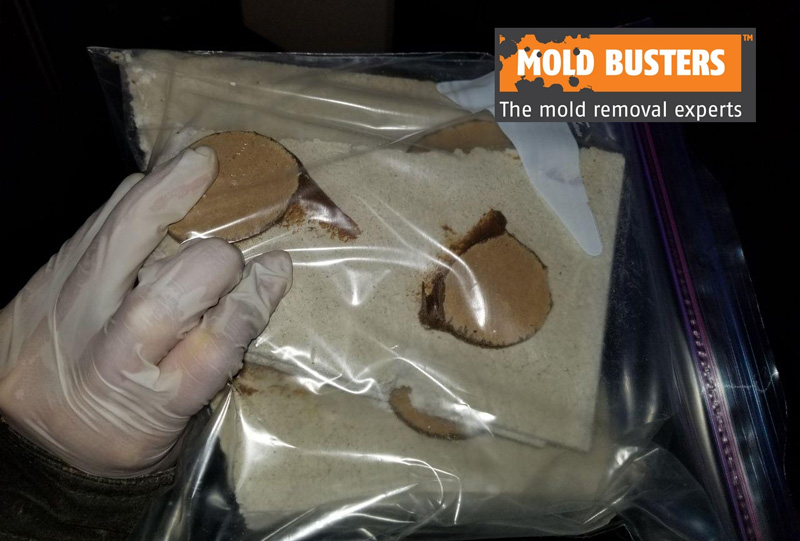
To definitively identify amosite asbestos, expert asbestos testing and analysis is needed. Your safest course is to hire a professional to analyse the materials in your property safely. If you live in an area served by Mold Busters, we offer our own asbestos testing service, and we’ll be more than happy to inspect your property and let you know if any amosite asbestos is present, and if so, how to deal with it.
When should I test for amosite asbestos?
Since you want to avoid exposure, the best time to test for asbestos is before acquiring or moving into a property, particularly an older property. Otherwise, consider testing as soon as you become aware of the presence of materials that might have been constructed using amosite asbestos. This might be the case when conducting renovations or otherwise exposing, disturbing or removing materials in your home or workplace that were previously sealed off.
Health Canada specifically advises to hire an expert to conduct asbestos testing before any of the following:
- renovating or remodelling,
- performing demolitions,
- constructing additions.
How can I remove amosite asbestos?
Before you contemplate removing asbestos yourself, remember:
- there is no safe level of asbestos exposure, and
- exposure happens primarily through loose fibres infecting the air and being inhaled.
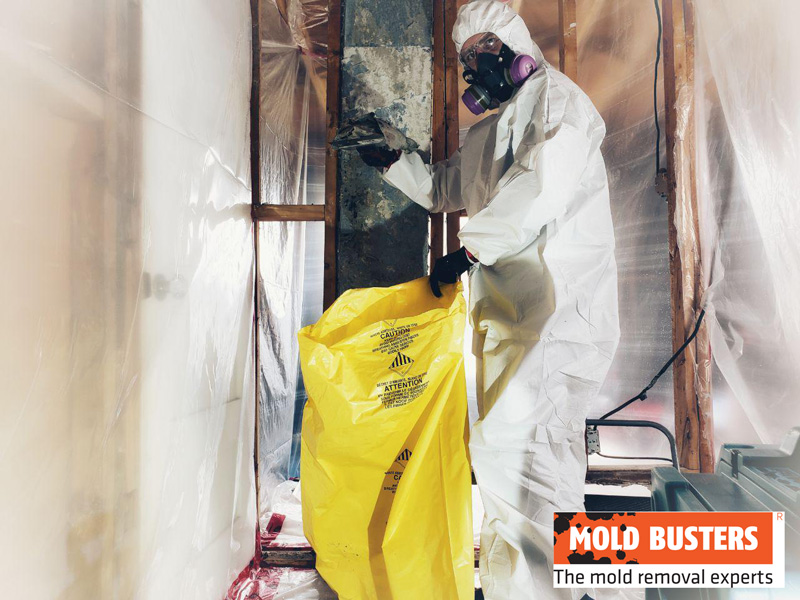
As you can imagine, the activity of removing amosite or any other asbestos-bearing material, runs the risk of releasing asbestos fibres into the air and contaminating the lungs of whoever is doing the removal. We therefore urge you: do not remove materials made from amosite asbestos yourself. Hire a certified asbestos abatement company to carry out the removal if amosite is found on your property.
Conclusion
All asbestos is dangerous, but amosite presents the double hazard of being both very common and particularly toxic. Commonly used in a variety of construction materials that remained legal to sell in Canada through to the end of 2018, this highly carcinogenic material may be present even in newer constructions.
To protect yourself and your family, hire an asbestos professional to make sure your property is free of amosite and other types of asbestos. For more information on your options, call us today or see our section on Asbestos Testing.

Get Special Gift: Industry-Standard Mold Removal Guidelines
Download the industry-standard guidelines that Mold Busters use in their own mold removal services, including news, tips and special offers:
Published: May 2, 2023 Updated: June 6, 2023

Written by:
John Ward
Account Executive
Mold Busters
Fact checked by:
Michael Golubev
CEO
Mold Busters

